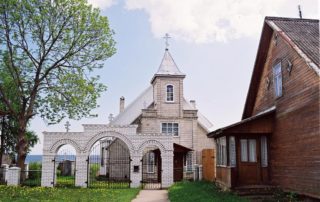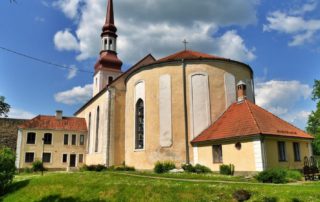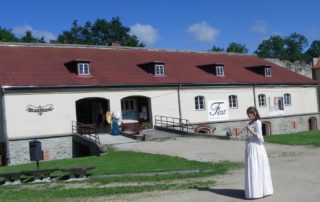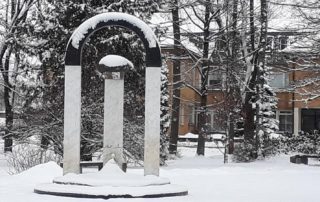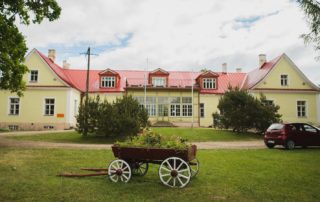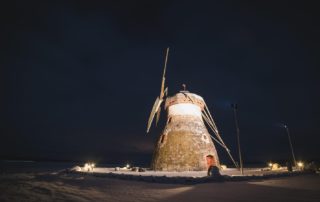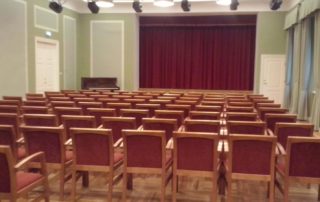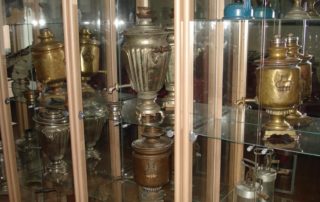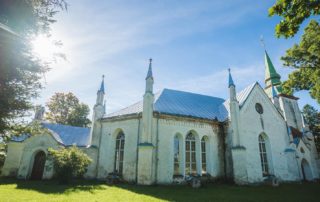Kükita Old Believers Prayer House of the Estonian Association of Old Believers Congregations
The first prayer house of Old Believers in Estonia is located in Kükita. The Kükita Prayer House was consecrated on September 14, 1740. During the war of 1812, the Cossack Old Believers donated a chandelier to the Prayer House. There were a total of 397 Old Believers in the list of parishioners of the Kükita congregation by 1833. The current Prayer House was built in 1948 in place of the one destroyed in World War II. Old Believers have services every Sunday and on all holidays (Christmas, Pascha and Epiphany).
St. Nicholas’ church, Põltsamaa
This Lutheran church, originally constructed on a bastion and the town's walls, was restored from its war-time ruins 50 years ago. Its altar, pulpit, lights and tower bells (XIX) are from the now defunct University of Tartu church.
Põltsamaa Museum
Põltsamaa Museum is located within the walls of the ancient Põltsamaa Ordensburg. Põltsamaa Museum gives an overview of the glorious past of the stronghold, town and the parish: Interesting facts: During the Livonian War the castle was the residence of the King of Livonia In the 19th century the castle was a Rococo style castle, a flourishing centre of culture and industry.
Monument and memorial park to Betti Alver
The park and monument dedicated to Betti Alver were opened with a ceremony on the writer's 90th birthday in 1996. This is not a traditional bust of a writer, but a symbol focussed on creation. The poet's autograph, signature in stone, is in the base of the monument. The monument as a whole depicts the airy lightness, classic strictness and energetic striving of the poet's works, but also shows contrasts, suppressing and destructive forces. The general image of the monument represents Betti Alver's fate and story.
Võisiku manor
Võisiku manor was first mentioned in 1558. It was one of the biggest manors in Livonia in the 18th and 19th centuries, stretching from Põltsamaa to Lake Võrtsjärv. There were 52 buildings on the manor originally, some of which we can still see today, and a further 67 in outlying parts of the manor and its mirror factory. Lord of the manor Timotheus Eberhard von Bock, who drew up Russia's first constitution for Emperor Alexander I and was sent to the Schlüsselburg fortress for 9 years for doing so, is the central character in Estonian author Jaan Kross' novel "The [...]
Kuremaa mill
Kuremaa mill is part of the Kuremaa manor complex; the fully renovated mill reopened in 2009. The ground floor is home to a function room with its own fireplace and a sales counter, while the first floor is the perfect place for exhibitions and training events. The second floor hosts an exhibition on the Dutch-style windmills that can be found in Estonia – including its most impressive piece, a model of the Kuremaa windmill. On the third, that is the top floor, you can admire the views over Vooremaa from the narrow windows. The Kuremaa mill is marked with a yellow [...]
Monument to cold weather in Jõgeva
A monument to cold weather has been erected on the Piibe road on the outskirts of Jõgeva, where the lowest ever temperature in Estonia (-43.5*C) was recorded in 1940. The monument also highlights the most recent record of -37.6*C from 2003, also recorded in Jõgeva.
Pajusi manor
Pajusi manor was constructed in the 17th century. Its long, stone main building in Classicist style is thought to have been erected in the early 19th century. It was one-storey; only the central section was adorned with a small upper floor, which bears a distinct decorative window. In addition to the main building, the manor as a whole includes a number of other buildings and a large park. Did you know...? *Remaining of the main building of the manor are its central part and right-hand wing, which is home to Pajusi Community Centre
Mustvee Old Believer’s Museum
Mustvee Old Believer’s Museum is one of the 21 places in Southern Estonia worth discovering that are marked by a yellow National Geographic window; all those interested in culture and history should definitely pay a visit. The exhibits give an overview of the culture of Old Believers both in the past and in the present. The collection includes samovars, irons, clothes worn by the Old Believers, commodities, furniture and fishing equipment. Also on display – J. Kolpakov’s paintings of the churches of Mustvee, P. Mihhailov’s and his son’s wood engravings and L. Korobova’s paintings and drawings of Lake Peipus.
Kursi’s Sts. Mary and Elisabeth Church of the Estonian Evangelical Lutheran Church
Baroque architecture in concordance with pseudo Gothic architecture (alteration by Johann Gottfired Mühlhausen). Twelve small spiring pinnacles symbolise the twelve apostles of Jesus. The church manor is a historical parochial centre; there is a museum in the vicarage (built in 1817).

